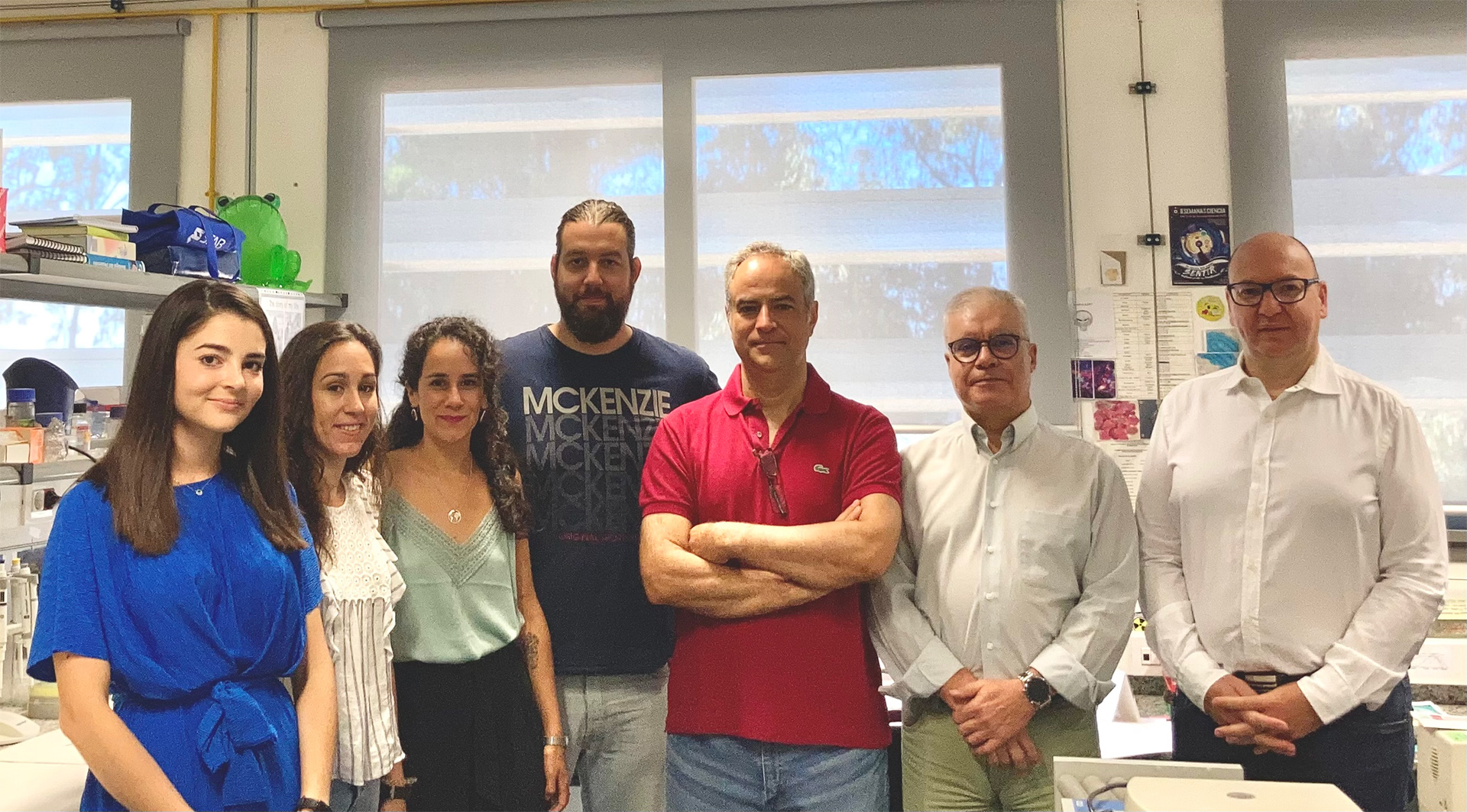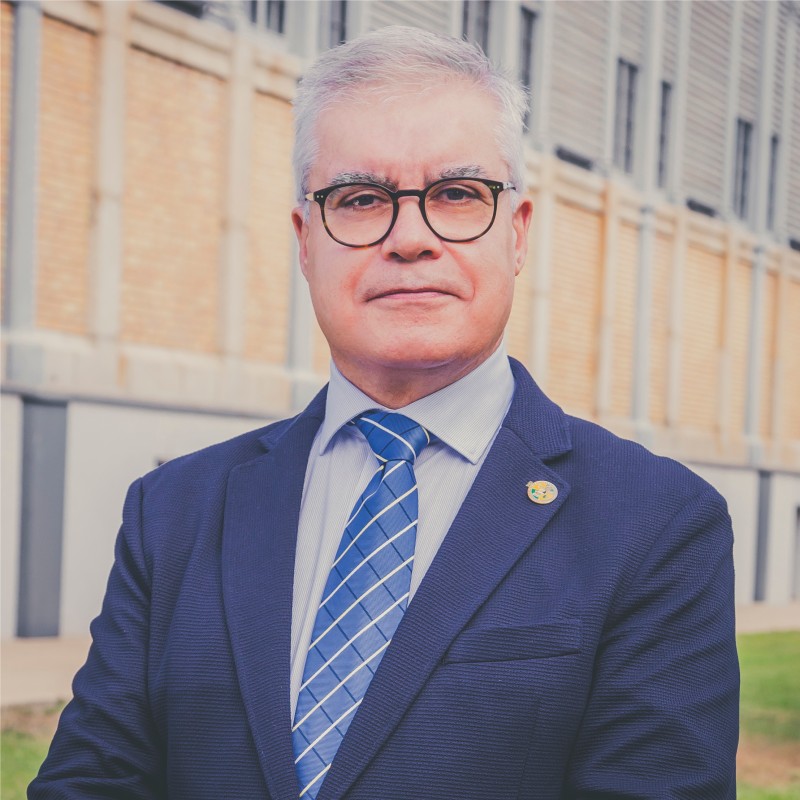Dc. Fernández Salguero Group
Molecular Biology of Cancer
Pedro M. Fernández Salguero has a PhD in Biology from University of Extremadura (UEx). He completed his postdoctoral training at the National Cancer Institute, NIH, USA (1991-1997). In 1997, he established the research group BiMoCan (Molecular Biology of Cancer) at University of Extremadura and has co-registered several patents licensed to pharmaceutical companies. He has served as a collaborating manager of the MCIN State Biomedicine Plan (2011-2017). Professor of Biochemistry and Molecular Biology since 2010, he has been Vice Chancellor for Research and Transfer at the UEx (2019-2023), being currently Chancellor for the institution. The overall group line of research is to understand how the Aryl Hydrocarbon Receptor (AhR) modulates differentiation, regeneration, reprogramming and senescence in physiology and tumor development, in order to identify both prognosis markers that help anticipate the progression and spread of the disease and potential therapeutic molecules.
About Us
- Pedro M. Fernández Salguero: Catedrático de Universidad
- Jaime M. Merino Fernández: Catedrático de Universidad
- Francisco J. González Rico: contratado posdoctoral AECC
- Gerardo Blanco Fernández: Jefe del Servicio de Cirugía Hepatobiliopancreática del Hospital Universitario de Badajoz (SES)
- Claudia M. Rejano Gordillo: investigadora posdoctoral Margarita Salas
- Ana Ordiales Talavero: investigadora predoctoral FPI
- Beatriz Marín Díaz: investigadora contratada con cargo al proyecto nacional Biomedicina
- Gema Méndez Bazaga: técnico de laboratorio contratada
- Adela Rojas Holguín: FEA Cirugía Hepatobiliopancreática del Hospital Universitario de Badajoz (SES)
- Diego López Guerra: FEA Cirugía Hepatobiliopancreática del Hospital Universitario de Badajoz (SES)

What Do We Research?
AhR has an important role in reprogramming, senescence, regeneration and carcinogenesis. The process of cell reprogramming is closely linked to an apparently antagonistic cellular event such as senescence, with both processes seeming to coexist under physiological and pathological conditions. In fact, recent studies have revealed that the reprogramming-senescence axis has an impact on major organ responses such as tissue repair and regeneration upon injury. Our group have already generated mouse lines expressing the OKSM reprogramming transgene in AhR wild type or AhR-null backgrounds in order to study such senescence-reprogramming interactions. Moreover, we are also studying AhR function in tissue repair, since partial hepatectomy-induced regeneration mainly involves a proliferative response in quiescent hepatocytes, while injury-induced regeneration involves both hepatocytes proliferation and the activation of liver stem cells. Our group have previously demonstrated how liver and lung regeneration upon acute tissue injury are more efficient in absence of AhR, with such responses involving the expansion of undifferentiated stem cell subpopulations. Therefore, our main research line is taking a multi-level approach by the integrated investigation of how the reprogramming-senescence balance impacts hepatic regeneration and hepatocarcinogenesis. This will allow the validation of prognostic markers and therapeutic targets for this disease, which are currently very limited.
Transcription factor aryl hydrocarbon receptor (AhR) has emerged as one of the main regulators involved both in physiological functions and tumor progression. In addition to its initially discovered functions in detoxification, this receptor exerts physiological and homeostatic functions in different tissues and organs including liver, skin, heart and immune system. A remarkable property of AhR is that its functions may be influenced by the phenotype of the target cell. Thus, it can promote or inhibit cell proliferation and tumor progression by acting as an oncogene or as a tumor suppressor. Therefore, a deregulation of AhR may have a causal role in contributing to tumor progression and spread. This receptor is particularly important in liver physiopathology, where transcriptomic studies have revealed that the absence of AhR alters gene expression patterns both in normal hepatocytes and hepatoma cells.
Currently we are characterizing, both at molecular and functional levels, in vitro and in vivo cell reprogramming upon the level of AhR expression. Moreover, we are investigating the crosstalk between reprogramming and cellular senescence in aged AhR +/+ and AhR -/- mice as well as in mouse and human liver tumors having different levels of AhR. Overall, we aim to demonstrate that AhR is relevant in controlling the reprogramming-senescence balance that likely underlines liver regeneration. We are also analyzing reprogramming and senescence markers mentioned above in biopsies obtained from the first and second surgical procedures to determine if any of them can be used in the prognosis of liver regeneration in patients with such hepatocarcinomas. By combining all these different approaches, we want to determine the impact of the reprogramming-senescence axis in mouse liver regeneration and repair after acute injury or partial hepatectomy, and its correlation with the analysis of reprogramming and senescence markers in regenerated livers from human hepatocarcinoma patients.
Publications
-
Nacarino-Palma A, Rico-Leo E, Campisi J, Ramanathan A, González-Rico, FJ, Rejano-Gordillo C, Ordiales-Talavero A, Merino JM, Fernández-Salguero PMAging-US 2022;14:4281-4304.
-
Nacarino-Palma A, Rejano-Gordillo C, González-Rico FJ, Ordiales-Talavero A, Román AC, Cuadrado M, Bustelo XR, Merino JM, Fernández-Salguero PMCancers 2021;13:4071.
-
González-Rico FJ, Vicente-García C, Fernández A, Muñoz-Santos D, Montoliú L, Morales-Hernández A, Merino JM, Román AC, Fernández-Salguero PMEpigenetics & Chromatin 2020;13:15-28.
-
Moreno-Marín N, Merino JM, Álvarez-Barrientos A, Patel D, Takahashi S, Gonzalez-Sancho JM, Gandolfo P, Ríos RM, Muñoz A, González FJ, Fernández-Salguero PMiScience 2018;4:44-63.
-
Román AC, Carvajal-González JM, Merino Jm, Mulero-Navarro S, Fernández-Salguero PMPharmacology & Therapeutics 2018;185:50-63.
-
Moreno-Marín N, Barrasa, E, Morales-Hernández A, Paniagua B, Blanco-Fernández G, Merino JM, Fernández-Salguero PMScientific Reports 2017;7(1).
-
Morales-Hernández A. González-Rico FJ, Román AC, Álvarez-Barrientos A, Sánchez L, Macía A, Heras S, García-Pérez JL, Merino JM, Fernández-Salguero PMNucl Acids Res 2016;44:4665-4683.
-
Contador-Troca M, Álvarez-Barrientos A, Merino JM, Morales-Hernández A, Rodríguez MI, Rey-Barroso J, Barrasa-Ardila E, Cerezo-Guisado MI, Catalina-Fernández I, Sáenz-Santamaría J, Oliver-Pozo FJ, Fernández-Salguero PMMolecular Cancer. 2015;14:148-162.
-
Contador-Troca M, Álvarez-Barrientos A, Barrasa-Ardila E, Rico-Leo E, Catalina-Fernández I, Menacho-Márquez M, Bustelo XR, Gómez-Durán A, Sáenz-Santamaría J, Fernández-Salguero PMCarcinogenesis 2013;34:2683-2693.
-
Román AC, González-Rico FJ, Moltó, E, Hernando H, Neto A, Vicente-García C, Ballestar E, Gómez Skarmeta JL, Vavrova-Anderson J, White R, Montoliu L, Fernández-Salguero PMGenome Research 2011;21:422-432. (*Journal cover).
